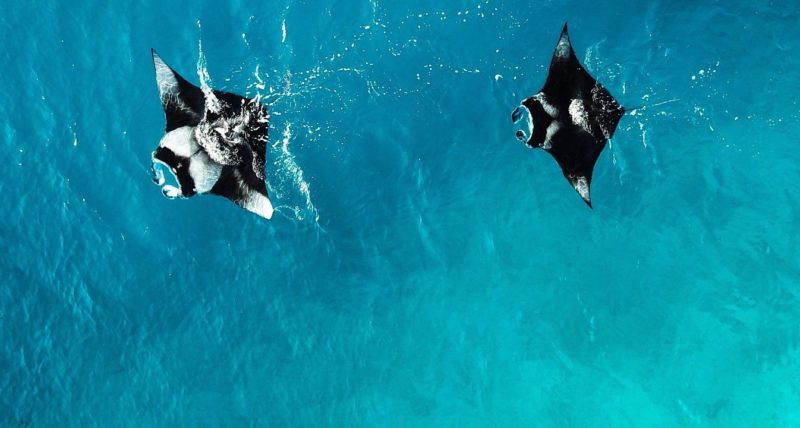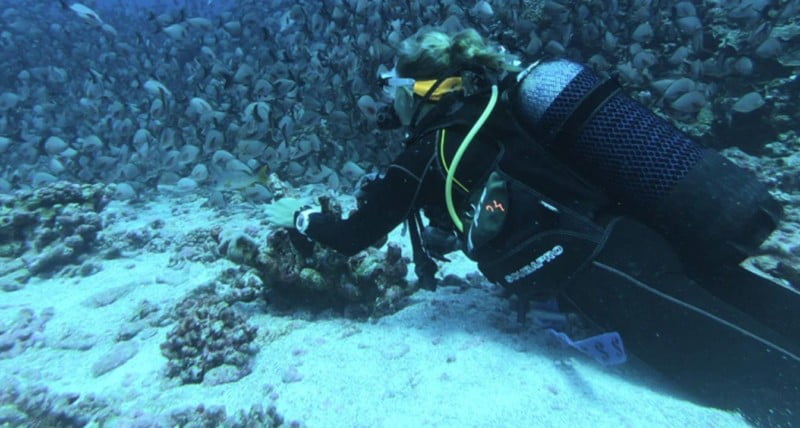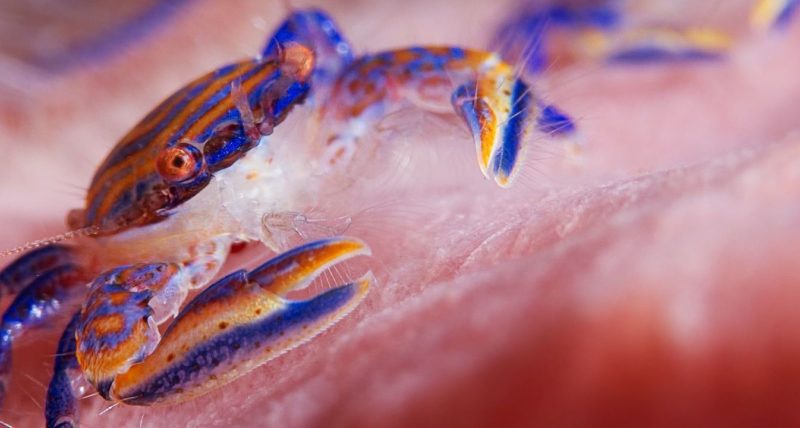All you need to know about diving with feather sea star
Diving in Bali with feather sea star
The waters around Padangbai in Bali are full of small yet fascinating marine animals that sometimes look like from a different planet. Bali dive sites such as Blue Lagoon and Jetty are bustling with rare macro species like frogfish, ghost pipefish, rhinopias or pygmy seahorses, just to name a few. None of them, however, swims as charmingly as the gentle creature named feather star. Indeed, it caught the interest of many divers in Bali thanks to its gracious moves and bright colors, making it look like a plant swimming in the water.
Fiding feather sea star on Bali dive sites
Whether you have already seen it while night diving in Padangbai or it is a target of your next underwater photography adventures, here is everything you need to know about this mesmerizing creature.
Bali diving lilies
Feather stars, along with starfish, sea urchins, sea cucumbers and brittle stars belong to Crinoid species and have been inhabiting the oceans for more than 200 million years. The name of their category originates from Greek words “krinon” meaning “lily” and “eidos” which means “form”, describing sea lilies that are their close relatives. Even though both species share their ability to regrow their body parts, sea lilies can renew their entire crown while feather stars can replace their body only if the nerve center and at least one arm are still functioning. Another difference between feather stars and sea lilies is their moving ability because sea lilies are usually attached to one place while feather stars like to take a “walk” on a seabed or even swim freely around the reef. These movements are done by waving their feathery arms up and down in a slow, controlled manner. If they wish to descend a bit deeper, they simply extend their arms as parachutes. Surprisingly, feather stars do not only swim gracefully but also quite quickly and can reach the speed of 5 centimeters per second, meaning that they can move up to 180 meters per hour.
Colors of Bali as camouflage
The body of feather star consists of a cup or tube-shaped base part containing nervous system, and up to 200 feathery arms attached to it. These are usually quite shot but, in some species, they can measure up to 30 centimeters. In general, feather stars inhabiting cold waters tend to have shorter arms while limbs of those found in warmer tropical waters are much longer. Each arm is covered with sticky substance enabling feather star to catch its food or hold onto rocks when the animal is resting. If the feather star is injured, its arms could regrow at the rate around 1 millimeter per day.
The mouth of feather stars is located on the upper part of the main body in the U-shaped gut, right next to its anus. Feather star does not actively hunt for food, but instead just waits till small particles from water get caught into its arms thanks to its many feather-like appendages. Before consuming the food, the feather star handles it from one arm to another, forming a small rounded mass that is then passed to the mouth.
Their biggest predators are fish, but clever feather stars use their vivid range of colors including reds, bright yellows, and greens to signalize them that they are poisonous, even though it is not the case. These animals often live in symbiosis with other miniature marine creatures, such as sea anemones or clownfish. They can also become home to tiny crinoid shrimps or lobsters which like to mimic their colors and feed on microorganisms that stick to their Velcro-like arms.
These underwater beauties reproduce every 10-16 months, and this process starts with external fertilization of eggs, followed by larval stage, free-swimming period and the state in which they are attached to rock or a coral, just like sea lilies. Once they reach adulthood, feather stars develop their signature arms and start to roam freely along the reef.
Bali diving and feather star
There are around 625 species of feather stars found in almost all oceans and all kinds of depths. If you would like to dive with them in warm water and calm conditions, try diving in Bali and explore the dive site around Padangbai, where you can see these beautiful marine creatures resting on corals and cavities of the reef during the day. Since many of them are nocturnal animals, we even recommend you to try a night dive in Bali so you can see them in different light, and we ensure you that it is a fascinating sight for every diver. If you manage to stop for a little while and observe them more closely, you might also spot the tiny shrimps and crabs hiding between their feathery arms.
Feel free to contact OK Divers Resort & Spa and enjoy colorful macro diving in Padangbai.



